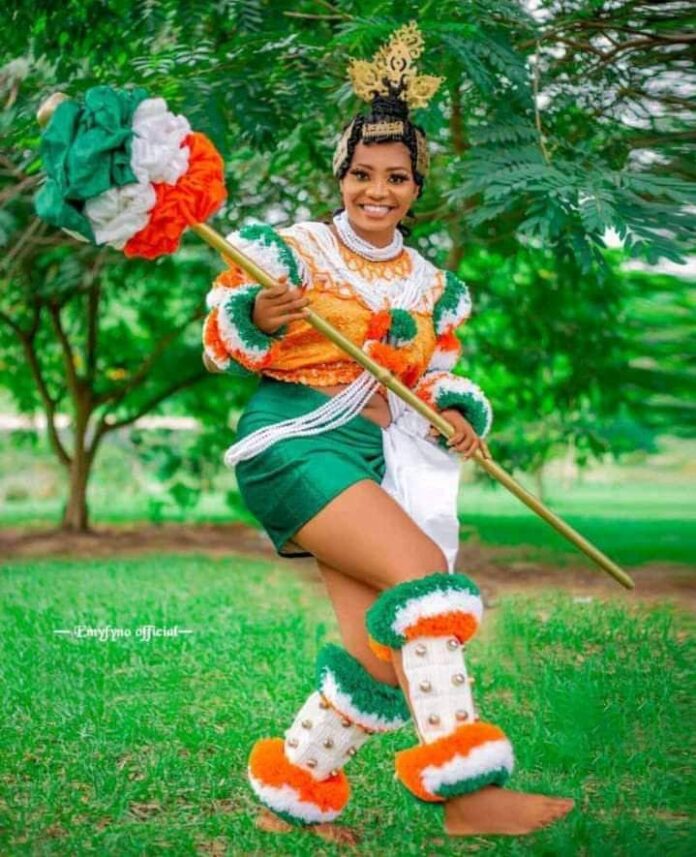Foremost, esoterica is lexically defined by WordWeb Dictionary as “secrets known only to an initiated minority”. It is etymologically related to esotericism and Esoteric (adj), defined by the same source as “something confined to and understandable by only an enlightened inner circle”.
Accordingly, this article is a continuum of related previous posts. It sets to unveil ten of the fourteen deep secrets (discovered through over two decades of dedicated in-depth empirical studies) about Efik original Ekömbi dance, that transcend its physical adorability to its hardly imagined metaphysical/ mystical endowments.
To an ordinary observer, learner or fan, whose sole interest restricts to the infotainment values/ fun derived from the cultural, ethnic, theatrical or aesthetic pleasure earned by seeing or participating actively or passively in Ekömbi, this Efik popular ancient maiden dance that gradually became globally embraced as a socio- unisex -dance by sundry admirers, may be mere adorable traditional dance that has no poetic, esoteric or mystical implications/hidden meanings than physically seen.
Though critically mythical and scholarly speculative by origin, particularly for lack of information about its exact inventor, date and birthplace, interested researchers, however, accept the belief that Ekömbi evolved from observed marine (sea/ocean) adorable, rhythmic, tidal movements.
HISTORICAL/MYTHICAL INSIGHTS
1. On one hand, historians claim that a certain nameless Efik hunter that disapeared mysteriously in the forest while hunting to become a captive in Ndem’s underwater cave, but eventually regained his freedom after 14 days, and returned home to teach his kinsfolk the sacred dance experience acquired by observing Ndem acolytes adore, appease or worship Ndem with.
According to this story told in the attitude of the myth of Ekpo Musufe and Atim Okpoebot in Ñkaña’s “Mutanda Oyom Nnamondo”, the hunter being equally an ATIAN (a highly gifted and skilled native drummer, storyteller and music maker), also returned with the memory of the costume and type/manner of songs sung to match/inspire the Ekömbi dance movement.
2. On the other hand, it is reported that while sitting at the sea shore to relax and enjoy breeze, a certain nameless sailor/fisherman noticed a strange but very graceful, rhythmic up and down tidal movements of the sea to and fro no distinct destination. In the process of rapt attention to know exactly what went on, a mermaid appeared having fun as she glides over the sea chest in harmony with the constantly repeated subtle or easy flowing mellifluous Eköm-bi/”nteñtekim-tekim sound produced as the effect of the high and low tide experience. Thus, the reason for Ekömbi as the dance’s name and Nteñtekim Tekim as its original drumming and body movement pattern.
GENERAL KNOWLEDGE
Certainly, Ekömbi, like every other organized or choreographed social, occupational, abstract or traditional dance of the Efik and other world places, exhibits basic elements of dance as universally approved by experts in theatre-dance studies. These precisely include the body (the expression medium), movement (the expressed art), time (the set expression frame/ limits), space (used arena/environment) and stimuli (music etc) that often add significantly to its literary, aesthetic, ideological, thematic, cultural, religious, economic or social advantages
This information, is not only in tandem with the widely accepted definition of dance as the natural “movement of the body in time and space in response to stimuli” (Agu, 2000), but broadly covers dance rhythm, spectacle, mood, nature, content, character, origin/motif.
NOW TO THE SUBJECT: EKÖMBI ESOTERICA
1. THE SERPENT (UKARAKPA)
2. THE BASKET (EKETE)
3. THE LADDER (EBERI)
4. THE RIVER (AKPA)
5. THE POT (ESO)
6. THE MIRROR (UKUITSO)
7. THE COMB (ERISAT)
8. THE MKPOTO
9. THE EKARA
10. THE IBIADIM
©Holyns Hogan, 2023
Photo credit: Original Source.









